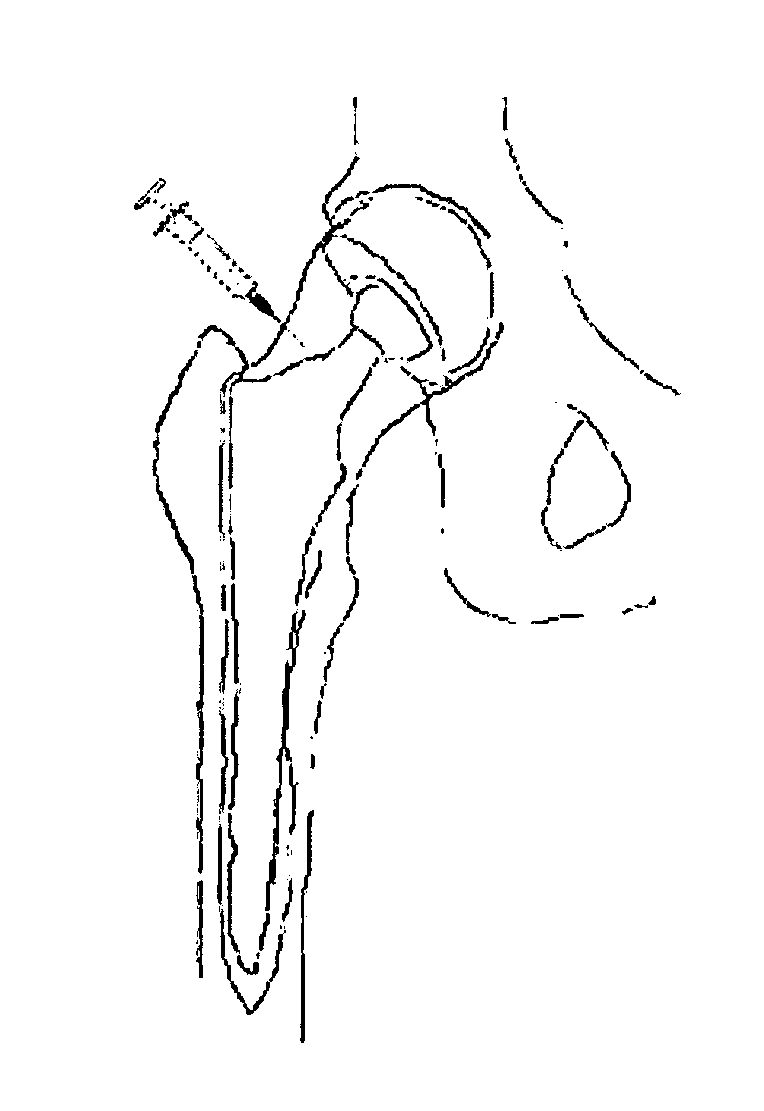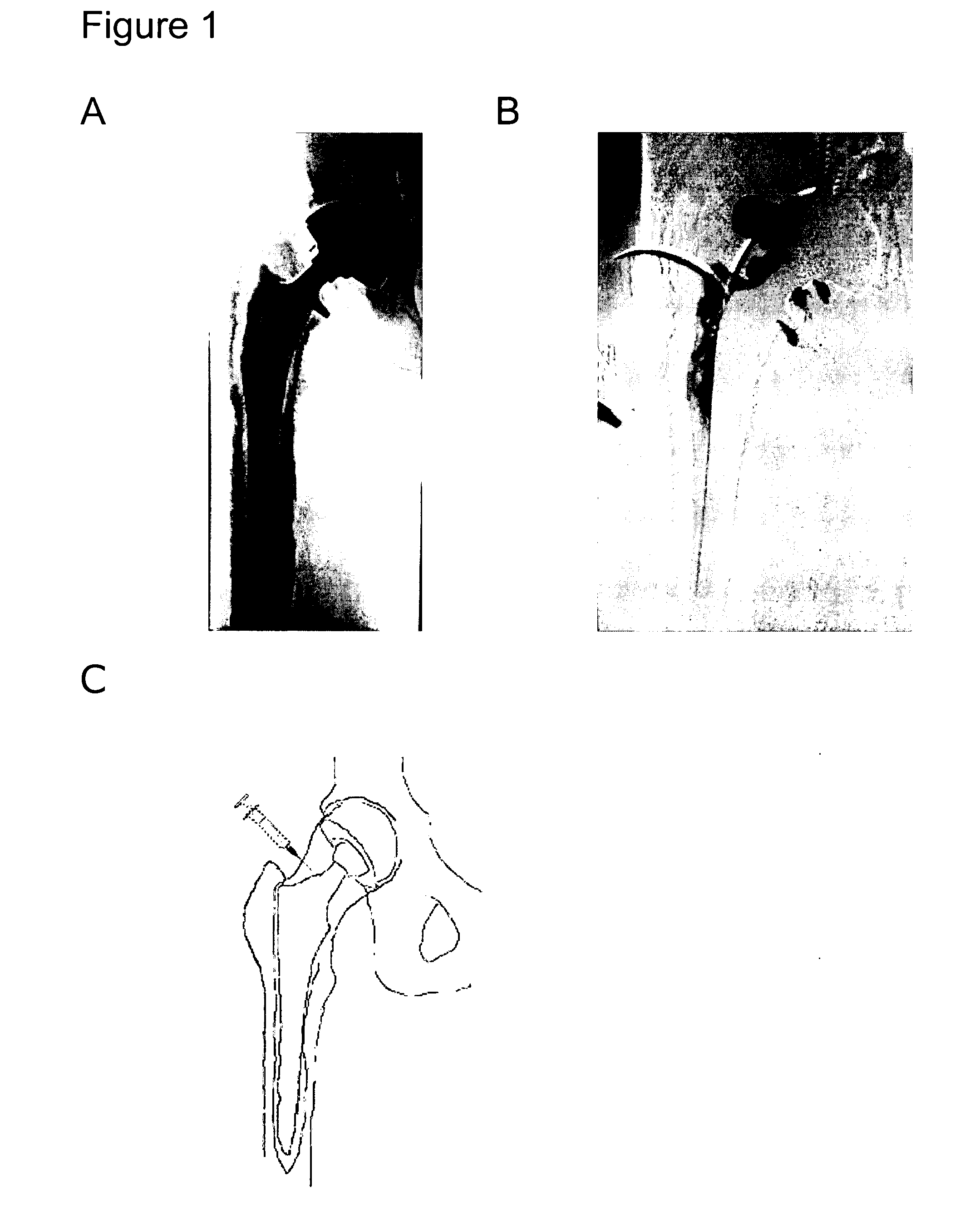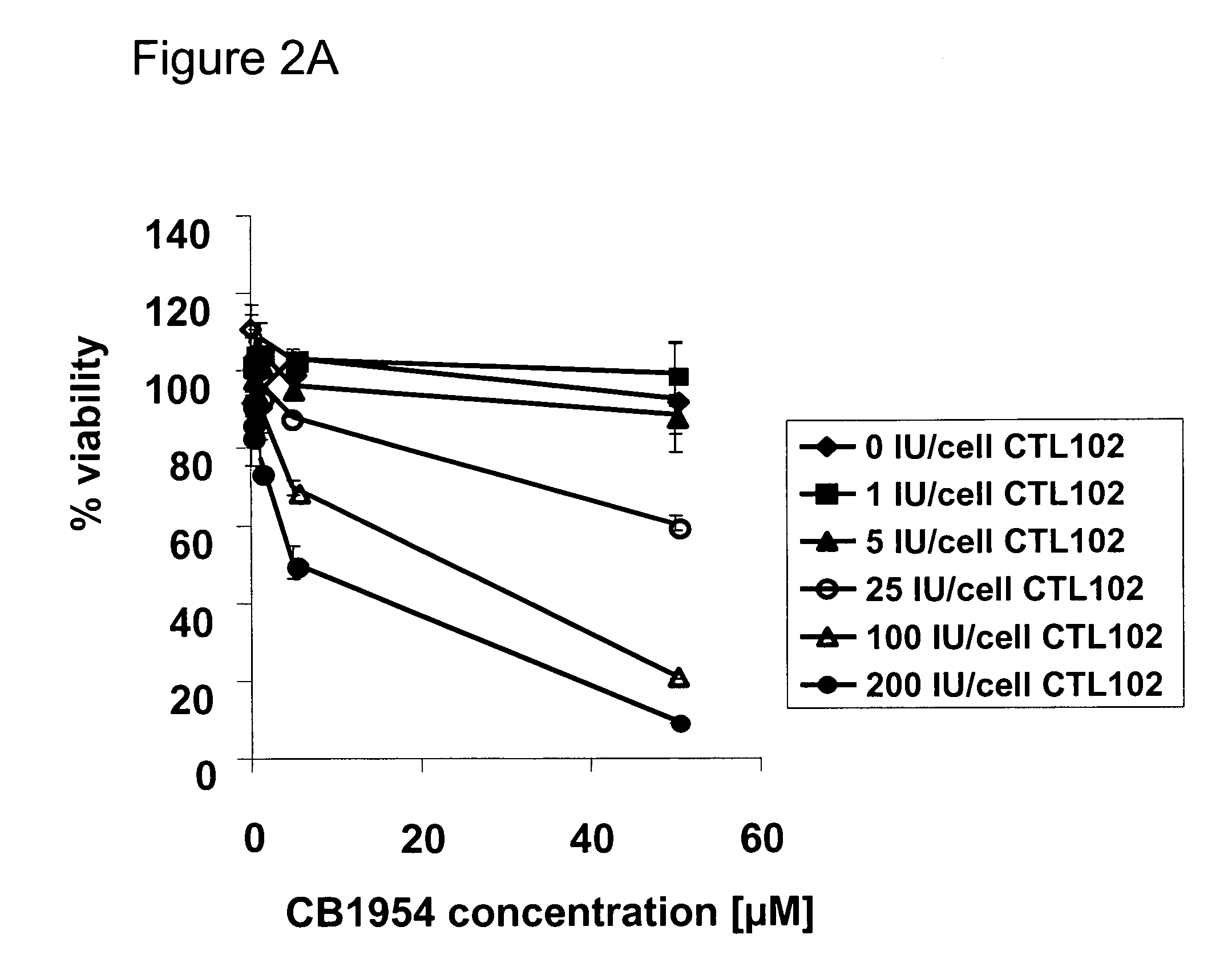Enzyme-prodrug therapy for prosthetic joint repair
a technology of prosthetic joints and enzymes, applied in the field of gene therapy, can solve the problems of high risk of dislocation and pathological fracture, high rate of complications and failure, and severe mobility restriction of patients
- Summary
- Abstract
- Description
- Claims
- Application Information
AI Technical Summary
Benefits of technology
Problems solved by technology
Method used
Image
Examples
example 1
Procedure for Treatment with CTL102(Ad5-NTR and CB1954)
Materials
[0107] The drug product, CTL102 injection, is a sterile, clear or virtually clear, aqueous liquid solution containing CTL102 virions at a nominal mean potency of 2×1011 particles ml−1, buffered at pH 7.4.
[0108] CB1954 is formulated as a sterile solution in solvent (N-methylpyrrolidone: polyethylene glycol, 2:7 v / v with 17.8 mg CB1954 ml−1). Just prior to use, the prodrug in solvent is diluted in sterile saline to a maximum final CB1954 concentration of 5 mg ml−1.
[0109] To stabilise the prosthesis, low viscosity bone cement (Simplex® P with tobramycin from Howmedica Inc, Rutherford, N.J., USA) is used. This radiopaque bone cement is a mixture of a liquid monomer component (2 ml 97.4% methylmethacrylate, 2.6% N,N-dimethyl-p-toluidine, 75 ppm hydroquinone) and a polymer powder (6 g polymethylmethacrylate, 30 g methylmethacrylate-styrene copolymer, 4 g barium sulphate, 1 g tobramycin sulphate). The components are vacuu...
example 2
Production of CTL102 (Ad5-NTR)
Materials and Methods
[0113] CTL102 was constructed as described in Djeha et al (2001) by homologous recombination in PerC6 helper cells. The cells were transfected at 90% confluence with an equimolar mixture of the transfer vector pTX0375 and the backbone vector pPS1160 complexed with Lipofectamine transfection reagent (Life Technologies).
[0114] pTX0375 was constructed in two stages: (i) the CMV promoter / enhancer fused to the NTR gene was excised from pTX0340 as a 1.5-kb BamHI-partial BgIII fragment and cloned into the unique BamHI site of pSW107, which is a pBluescript-based vector (Stratagene) that contains the human b-globin IVS II fused to the human complement 2 gene polyadenylation sequence adjacent to the BamHI site. A plasmid, pTX0374, which contains the CMV.NTR fragment in the required orientation, was identified by PCR using the T3 primer (5′-ATTAACCCTCAC-TAAAG-3′) which anneals to the CMV promoter / enhancer, and an NTR primer, ECN2 (5′-TCTG...
example 3
Killing of Interface Tissue from Patients with CTL102 and CB1954
[0117] In order to demonstrate the feasibility of using a virally delivered enzyme-prodrug system to kill interface cells, cells taken from two patients during revision surgery were cultured in vitro, incubated with CTL102 at a range of MOIs and subsequently exposed to CB1954. Cell viability was then determined using a metabolic activity assay.
Method
Interface Tissue Samples
[0118] For all experiments described, interface cells were used. Interface tissue was removed from the periprosthetic space during revision-surgery by an orthopedic surgeon and collected in sterile phosphate buffered saline (PBS). Connective tissue and fat were removed thoroughly and the interface tissue was digested for at least two hours at 37° C. using collagenase 1A (1 mg / ml; Sigma, St Louis, Mo., USA). Cells were then harvested by filtering the tissue / colagenase substance through a 200 μm filter (NPBI, Emmer-Compascuum, The Netherlands). Th...
PUM
| Property | Measurement | Unit |
|---|---|---|
| Cytotoxicity | aaaaa | aaaaa |
| Toxicity | aaaaa | aaaaa |
Abstract
Description
Claims
Application Information
 Login to View More
Login to View More - R&D
- Intellectual Property
- Life Sciences
- Materials
- Tech Scout
- Unparalleled Data Quality
- Higher Quality Content
- 60% Fewer Hallucinations
Browse by: Latest US Patents, China's latest patents, Technical Efficacy Thesaurus, Application Domain, Technology Topic, Popular Technical Reports.
© 2025 PatSnap. All rights reserved.Legal|Privacy policy|Modern Slavery Act Transparency Statement|Sitemap|About US| Contact US: help@patsnap.com



